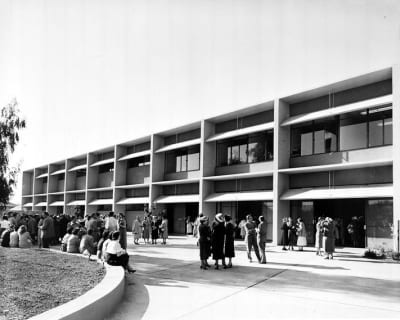Historical Information about UC Davis Campus Buildings
Browse Alphabetically
Buildings A – E
Aggie Villa
| Completed: | 1948 |
| Financing: | State appropriation |
| Architect: | U.S. Army |
| History: | Aggie Villa, located south of First Street, was made up of war housing units that were acquired from the federal government. The units contained two and three bedroom apartments that provided housing for young families. The complex was razed in 1972. |
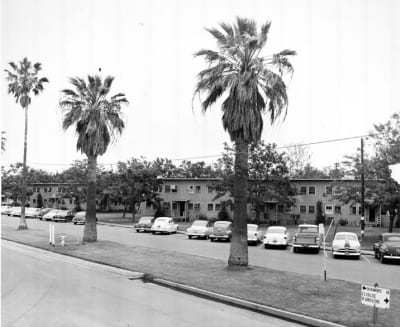
Ash Hall, Birch Hall, Cedar Hall (A-B-C Dormitories)
| Completed: | 1947 |
| Materials: | Wood frame |
| Cost: | Ash Hall ($56,480) Birch Hall ($55,980) Cedar Hall ($55,980) |
| Financing: | State appropriation |
| Architect: | U.S. Army |
| History: | These surplus war housing units, acquired from the federal government, were moved to campus to provide student housing. They were later razed. |

Asmundson Hall
| Materials: | Reinforced concrete |
| Cost: | $1,391,006 |
| Financing: | State appropriation |
| Architect: | Donald P. Smith |
| Dedication: | Dedication: On June 23, 1970 the building was named in honor of Vigfus Asmundson (1895-1974), who served as Professor of Poultry Husbandry from 1933-1967. |
| History: | Originally named the Poultry Husbandry Building, it was built for that department. It later housed the Avian Sciences and Plant Sciences Departments. As of 2014, it was home to the Plant Sciences Department |
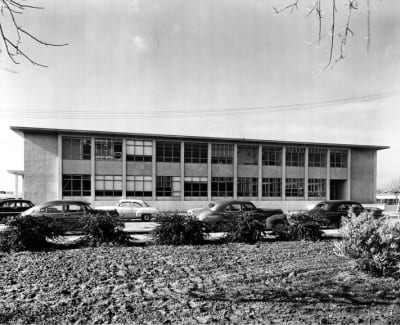
Bainer Hall
| Completed: | 1966 |
| Materials: | Reinforced and precast concrete |
| Cost: | $3,198,000 |
| Financing: | State appropriation and Health Education Facilities Act |
| Architect: | Dreyfuss & Blackford |
| Dedication: | In 1969, the building was dedicated to Roy Bainer (1902-1990), who served as Professor of Agricultural Engineering from 1935-1969. |
| History: | Bainer Hall has always been home to the College of Engineering. |
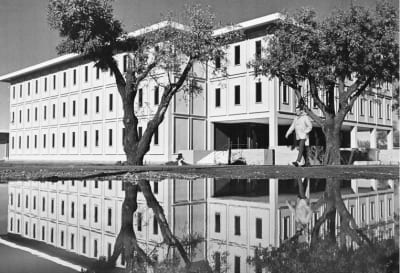
The Barn
| Completed: | 1914 |
| Materials: | Wood frame |
| Architect: | Cunningham & Politeo |
| History: | Originally built to house beef cattle, this building was remodeled in 1968-1969 into office space for the Architects and Engineers Office. In 2004 the Architects and Engineers Office moved off campus. As of 2014, the building housed the John Muir Institute for the Environment and affiliated programs. |
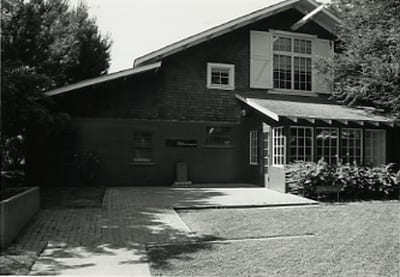
Bike Barn
| Completed: | 1916 |
| Materials: | Wood frame |
| Architect: | Office of Architects & Engineers |
| History: | Originally known as TB 24, the building was used as a judging pavilion. It was later occupied by the Bike Barn and Outdoor Adventures. In 2013, Outdoor Adventures moved to the Rec Pool Lodge. |

Briggs Hall
| Completed: | 1971 |
| Dedication: | Briggs Hall was dedicated on May 24, 1975 in honor of Fred N. Briggs (1896-1965), who served as Professor of Agronomy and Dean of the College of Agriculture. |
| History: | The building has housed teaching facilities, research laboratories, and the departments of Molecular and Cellular Biology, Microbiology and Molecular Genetics, Neurobiology, Physiology, and Behavior, and Entomology. |
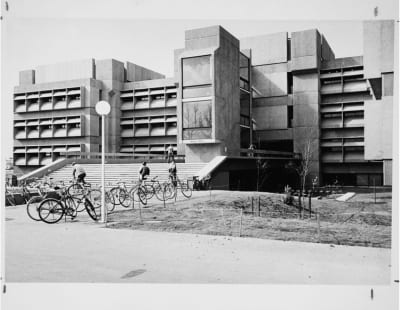
Carlson Health Sciences Library
| Completed: | 1976 |
| Dedication: | The Regents of the University of California in executive session on June 20, 1980, approved “that the Health Sciences Library, located in Building B of the Medical School Complex, Davis campus, be designated the Loren Daniel Carlson Health Sciences Library.” The renaming ceremony and dedication took place on December 12, 1984. Loren D. Carlson (1915-1972) came to the medical school at Davis in 1966 as assistant dean and chairman of the division of sciences basic to medicine, a post he held concurrently with the chairmanship of the Department of Human Physiology. |
| History: | The beginnings of the Carlson Health Sciences Library date to 1956 when the Veterinary Medicine Library was established in a room next to the Dean’s Office in Haring Hall. The Veterinary Medicine Library became the Health Sciences Library (HSL) in 1966 with the founding of the School of Medicine. (The Medical Center Library was established in 1970 at the UC Davis Medical Center.) In 1967, the HSL moved from its original location in Haring Hall to Surge II. A decade later in 1977, the HSL opened in its current location in Medical Sciences 1B. |

Chemistry Building
| Completed: | 1965 |
| Materials: | Cast in place and precast reinforced concrete |
| Cost: | $3,647,000 |
| Financing: | State appropriation |
| Architect: | John Funk |
| History: | Originally known as Physical Sciences II, this building has always housed the Chemistry Department. |
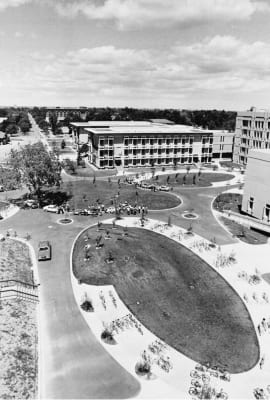
Cowell Student Health Center
| Completed: | 1952 |
| Materials: | Concrete and plaster |
| Cost: | $623,700 |
| Financing: | State appropriation |
| Architect: | John Funk |
| Dedication: | On May 7, 1967 the center was dedicated to the Cowell Family who had a lime mining and ranching enterprise in Santa Cruz, California. |
| History: | In 1973, the building was named the Cowell Hospital and Student Health Center. The hospital section closed in 1987. The building served as the Student Health Center until 2010 when a new facility was built. As of 2014, it was home to Occupational Health Services. |
Cowell Student Health Center Addition
| Completed: | 1966 |
| Cost: | $563,782 |
| Financing: | Cowell Foundation funds |
| Architect: | John Funk |

Cruess Hall
| Completed: | 1952 |
| Materials: | Concrete |
| Cost: | $645,662 |
| Financing: | State appropriation |
| Architect: | Herbert E. Goodpastor |
| Dedication: | On March 19, 1960 the building was named for William Vere Cruess (1886-1968) who served as Professor of Food Technology at UC Berkeley. |
| History: | Located on California Avenue, this building was constructed specifically for the Food Science and Technology Department. A 1966 addition, built at a cost of $236,373, was designed by Cox, Liske & Associates. In 2010, the Food Science and Technology Department moved to the Robert Mondavi Institute for Wine and Food Science. As of 2014, the building housed the Design Department and the Design Museum. |
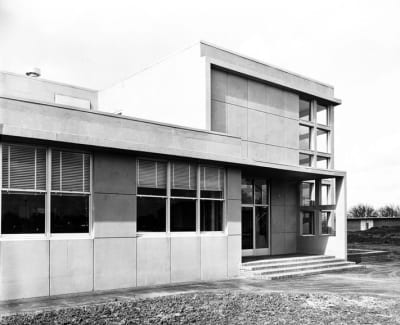
Dutton Hall
| Completed: | 1998 |
| Cost: | $9.8 million |
| Architect: | Ficher and Freidman Associates |
| Dedication: | On October 15, 1999 the building was dedicated to Thomas B. Dutton, Vice Chancellor of Student Affairs from 1970-1991. |
| History: | Located on the site formerly occupied by East Hall, this building was built to bring together student services including Financial Aid, Student Aid Accounting, Cashier’s Office, Learning Skills Center, State Employment Center, Outreach Services, and Student Judicial Affairs. As of 2014, the offices located in the building include: the Cashier’s Office, Early Academic Outreach Program, Educational Talent Search, Financial Aid, Mathematics Diagnostic Testing Project, Student Academic Success Center, Student Accounting, Student Employment Center, Student Judicial Affairs, Transfer Reentry Veterans Center, Undergraduate and Prestigious Scholarship Office, and Upward Bound. |
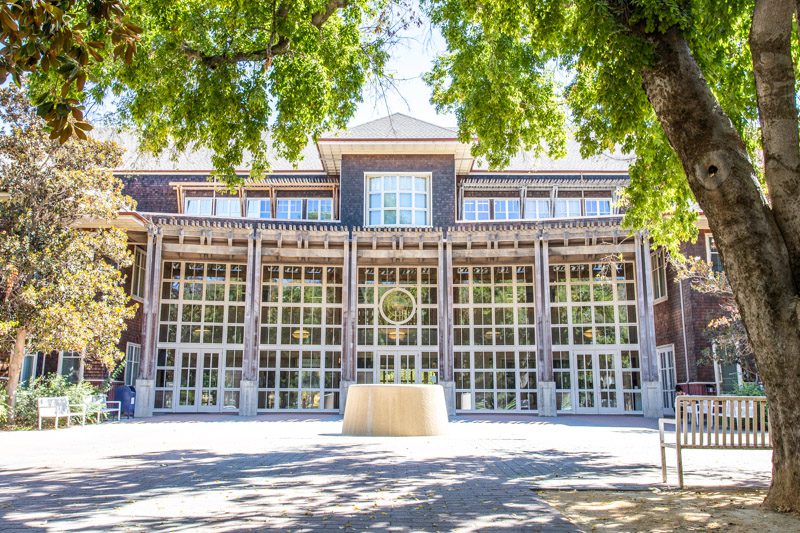
East Hall
| Completed: | 1909 |
| Materials: | Wood frame |
| Cost: | $13,136 |
| Financing: | State appropriation |
| Architect: | Cunningham & Politeo |
| History: | East Hall was built in two parts—the first was a dining hall and the second was the infirmary. The dining hall was later was remodeled into the first campus theater. In 1936, the building was moved from its original location to the present day site of Dutton Hall. Before it was deemed unsafe and vacated in June 1973, the building was home to the CoffeeHouse and several student activities offices. It was razed in1974. |
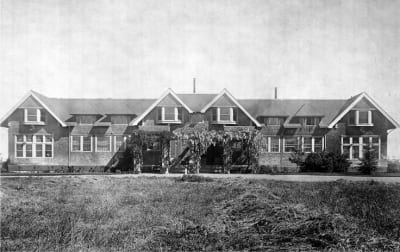
Enology Lab
| Completed: | 1939 |
| Materials: | Wood, concrete, and stucco |
| Cost: | $73,630 |
| Financing: | State appropriation |
| Architect: | William C. Hays |
| History: | The building was built and continuously used for the study and teaching of winemaking. Brandy was also made in the building with the tower used as a brandy still. The Viticulture and Enology Department moved to the Robert Mondavi Institute for Wine and Food Science in 2010. |
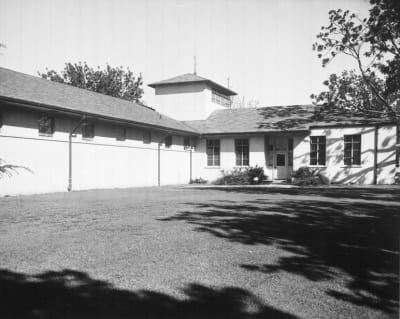
Everson Hall
| Completed: | 1952 |
| Materials: | Concrete |
| Cost: | $846,729 |
| Financing: | State appropriation |
| Architect: | Clark & Buettler |
| Dedication: | In 1970 the building was dedicated to Gladys J. Everson (1909-1969), who served as Professor of Home Economics from 1953-1967. |
| History: | Originally named the Home Economics Building, it initially housed that department. It later housed offices and laboratories for the departments of Textiles and Clothing and Civil and Environmental Engineering. As of 2014, the building is home to the Art History Department, the Textiles and Clothing Program, and the Mathematics and Science and Teaching Program (MAST). |
